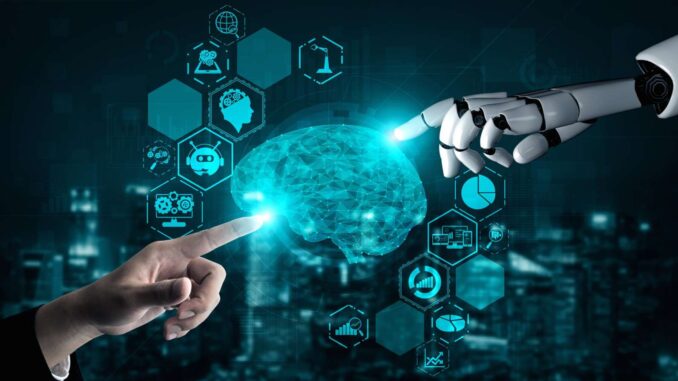
When Artificial Intelligence (AI) and the Internet of Things (IoT) converge, they create powerful synergies that enhance data collection, analysis, and decision-making capabilities.
Here are several key aspects of how AI and IoT interact and the benefits they bring:









### 1. Enhanced Data Analytics
– **Real-time Insights**: IoT devices generate vast amounts of data. AI algorithms can analyze this data in real-time to provide insights, identify patterns, and uncover trends that humans may miss.
– **Predictive Analytics**: AI can process historical data from IoT devices to forecast future events, such as equipment failures or maintenance needs, allowing for proactive actions.
### 2. Automation and Control
– **Smart Automation**: AI can automate processes by using data from IoT sensors. For example, smart home devices can learn user preferences and adjust settings (like temperature or lighting) accordingly.
– **Autonomous Systems**: In industrial settings, AI can enable IoT devices to operate autonomously, optimizing supply chains or managing energy consumption without human intervention.
### 3. Improved Decision Making
– **Data-Driven Decisions**: Combining the situational awareness from IoT devices with AI’s analytical power enables organizations to make informed decisions based on real-time conditions and predictive models.
– **Enhanced User Experience**: In consumer applications, AI can personalize user interactions with IoT devices, making them more intuitive and user-friendly.
### 4. Boosting Efficiency
– **Resource Optimization**: AI can analyze data from IoT devices to optimize resource usage, leading to cost savings. For example, AI can manage energy consumption in smart buildings, reducing operational costs.
– **Supply Chain Management**: AI can optimize routes, inventory levels, and production schedules based on real-time data from IoT devices, improving overall efficiency.
### 5. Improved Security
– **Anomaly Detection**: AI can enhance the security of IoT systems by identifying unusual patterns or behaviors that may indicate security breaches or system failures.
– **Threat Mitigation**: By continually learning from new data, AI can help predict and mitigate potential security threats to IoT devices.
### 6. Healthcare Innovations
– **Remote Monitoring**: Wearable IoT devices can collect patient data, which AI algorithms can analyze to provide insights into health conditions and recommend actions.
– **Personalized Medicine**: AI can analyze data from various IoT health devices to tailor treatment plans to individual patients.
### 7. Environmental Monitoring
– **Smart Cities**: IoT sensors can monitor environmental conditions, and AI can analyze this data to improve urban planning, traffic management, and energy consumption.
– **Sustainability Efforts**: AI can optimize resource usage in agriculture or manufacturing, leading to more sustainable practices.
### Challenges and Considerations
While the integration of AI and IoT brings numerous benefits, it also presents challenges, such as:
– **Data Privacy**: The collection and analysis of vast amounts of data raise concerns about user privacy and data protection.
– **Interoperability**: Different IoT devices may use different protocols, making it challenging to integrate AI solutions effectively.
– **Complexity and Costs**: Implementing AI and IoT solutions can be complex and costly, requiring skilled personnel and significant infrastructure investment.
### Conclusion
The convergence of AI and IoT holds tremendous promise across various sectors, driving innovation and efficiency. As technology continues to advance, the potential applications and benefits of their integration will likely expand, leading to smarter systems and enhanced quality of life.

Leave a Reply